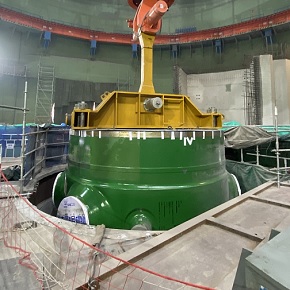 |
||
|
Rosatom technology helping control yellow fever mosquitos in Latin America Rosatom, PUBLISHED 21.12.2024 Agencia Boliviana de Energia Nuclear, ABEN (the Bolivian Nuclear Energy Agency), in collaboration with Instituto Nacional de Laboratorios de Salud, INLASA (the National Institute of Health Laboratories), and Instituto Nacional de Investigacion en Salud Publica, INSPI (the National Public Health Research Institute), for the first time irradiated yellow fever mosquitoes at the Multipurpose Irradiation Center (MIC) at the Nuclear Research and Technology Center in Bolivia, being constructed by GSPI JSC (State Specialized Design Institute, a joint-stock company affiliated with Rosatom). The MIC employs advanced Russian gamma irradiation technology supplied to Bolivia by GSPI JSC and NIITFA JSC (Research and Development Institute for Technical Physics and Automation, a joint-stock company of Rosatom's scientific division). In agriculture, this technology increases crop yields and prolongs the shelf life of agricultural products. In healthcare, it is used for sterilizing medical products. The technology helps control insect pests found mainly in tropical regions, as well as insects that can transmit deadly diseases afflicting humans. These pests include mosquitoes, known to transmit malaria, as well as yellow fever mosquitos that can transmit dengue fever, chikungunya, yellow fever, and the Zika virus, among other tropical diseases. According to statistics from the World Health Organization (WHO), the number of dengue cases has increased from half a million to five million over the past two decades. The irradiation method involves mass breeding and sterilizing specific pests with radiation and then releasing them into target areas on a regular basis. Sterile insects are unable to reproduce, which leads to a gradual decrease in the pest population in the region over time. "This innovative technique for insect sterilization aims to control mosquito populations and, consequently, reduce disease incidence. The irradiation was carried out in collaboration with INLASA as part of a cooperative project between the Plurinational State of Bolivia and the Republic of Ecuador, with the invaluable assistance of international expert William Ponce Yulema. We are committed to advancing our research to offer the most effective solutions to the people of Bolivia," stated President Luis Arce in a post on his Telegram channel. Topics: Rosatom Other news: Turbine installation completed at Unit 1 of Akkuyu NPP The Akkuyu NPP turbine-generating unit consists of a combined high- and medium-pressure module, two low-pressure modules, and a generator. Alexey Likhachev attended the launching ceremony of Chukotka nuclear icebreaker After the launch, construction of Chukotka will proceed in the water. WANO appoints Jose Gago as its new Chair Effective on 1 March 2025. |
Hero of the day 
Reactor pressure vessel of Xudapu NPP Unit 4 has been installed in design position VVER-1200 reactor is a cylindrical vessel with an elliptical bottom, inside which there is the core and the internals. The length of the equipment is 13 meters, the diameter is 4.5 meters, and the weight is 320 tons. INTERVIEW
Rosatom OPINION
CNNC |

